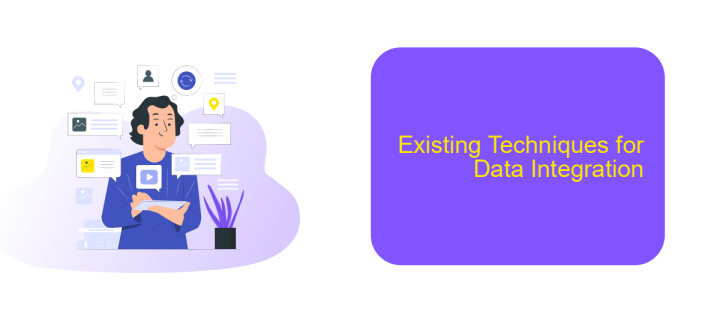Need of Data Integration
In today's data-driven world, the need for data integration has never been more critical. Organizations are inundated with vast amounts of information from diverse sources, making it essential to consolidate and harmonize this data for actionable insights. Effective data integration enhances decision-making, boosts operational efficiency, and provides a unified view of business processes, ultimately driving competitive advantage.
Introduction
In today's data-driven world, the integration of data from various sources is critical for businesses to make informed decisions. Data integration involves combining data from different systems and formats into a unified view, enabling organizations to leverage comprehensive insights and streamline operations.
- Improved data quality and consistency
- Enhanced decision-making capabilities
- Increased operational efficiency
- Real-time data access
Tools and services like ApiX-Drive facilitate seamless data integration by automating the process and ensuring that data flows smoothly between different applications. ApiX-Drive offers a user-friendly interface and robust features that help businesses connect disparate systems without the need for extensive coding or technical expertise. This not only saves time but also reduces the risk of errors, making data integration more accessible and efficient for organizations of all sizes.
Challenges and Issues in Data Integration

Data integration presents several challenges and issues that organizations must navigate to achieve seamless and efficient data flow. One primary challenge is data inconsistency, where data from different sources may have varying formats, structures, and definitions. This inconsistency can lead to data quality issues, making it difficult to consolidate and analyze data accurately. Additionally, managing large volumes of data from disparate sources can be resource-intensive and complex, requiring robust infrastructure and sophisticated tools to ensure data integrity and performance.
Another significant issue is the integration of legacy systems with modern applications. Many organizations still rely on outdated systems that are not designed to communicate with newer technologies, creating integration bottlenecks. Security and compliance also pose challenges, as integrating data from multiple sources increases the risk of data breaches and non-compliance with regulations. Services like ApiX-Drive can help mitigate these challenges by providing automated data integration solutions that streamline the process, enhance data consistency, and ensure secure data transfers. Utilizing such services can significantly reduce the complexity and cost associated with data integration, enabling organizations to focus on deriving insights and value from their integrated data.
Benefits of Data Integration

Data integration plays a crucial role in modern businesses by enabling seamless connectivity and collaboration across various data sources. By consolidating disparate data into a unified system, organizations can enhance their decision-making processes and achieve greater operational efficiency.
- Improved Data Quality: Integrating data from multiple sources helps eliminate inconsistencies and redundancies, leading to more accurate and reliable information.
- Enhanced Business Intelligence: Unified data provides a comprehensive view of business operations, allowing for better analysis and strategic planning.
- Cost Efficiency: Streamlined data management reduces the need for multiple data storage solutions, thus lowering operational costs.
- Increased Productivity: By automating data workflows, tools like ApiX-Drive minimize manual data entry, freeing up valuable time for employees to focus on core tasks.
- Better Customer Insights: Integrated data enables a holistic view of customer interactions, facilitating personalized marketing and improved customer service.
Incorporating data integration solutions such as ApiX-Drive can significantly simplify the integration process, providing businesses with an efficient way to connect and automate various applications and services. This leads to a more cohesive data environment, ultimately driving business growth and innovation.
Existing Techniques for Data Integration

Data integration is a crucial aspect of modern data management, enabling organizations to combine data from various sources into a unified view. Several existing techniques facilitate this process, ensuring data consistency and accessibility.
One common approach is ETL (Extract, Transform, Load), which involves extracting data from different sources, transforming it into a suitable format, and loading it into a target system. Another method is data virtualization, which allows users to access and query data without needing to know its physical location.
- ETL (Extract, Transform, Load): A traditional method that involves extracting data, transforming it, and loading it into a data warehouse.
- Data Virtualization: Provides a real-time, unified view of data without physical consolidation.
- API Integration: Uses APIs to connect different systems and facilitate data exchange.
- Data Warehousing: Centralizes data from multiple sources into a single repository for analysis and reporting.
Tools like ApiX-Drive offer a streamlined solution for API integration, enabling seamless data flow between various applications and services. By leveraging such tools, organizations can simplify the integration process and enhance their data management capabilities.


Conclusion
In conclusion, the need for data integration is paramount in today's data-driven world. Organizations must leverage integrated data to make informed decisions, enhance operational efficiency, and gain a competitive edge. Seamless data integration ensures that disparate data sources can be unified, providing a comprehensive view of information that drives strategic initiatives and fosters innovation.
Tools like ApiX-Drive play a crucial role in facilitating data integration by offering user-friendly solutions to connect various applications and automate data workflows. By utilizing such services, businesses can streamline their processes, reduce manual intervention, and ensure data consistency across platforms. Embracing data integration is not just a technological upgrade but a strategic necessity for any organization aiming to thrive in the digital era.
FAQ
Why is data integration important for businesses?
What are the common challenges faced during data integration?
How can businesses ensure data security during integration?
What are the benefits of automating data integration processes?
How can businesses choose the right data integration tool?
Time is the most valuable resource in today's business realities. By eliminating the routine from work processes, you will get more opportunities to implement the most daring plans and ideas. Choose – you can continue to waste time, money and nerves on inefficient solutions, or you can use ApiX-Drive, automating work processes and achieving results with minimal investment of money, effort and human resources.

